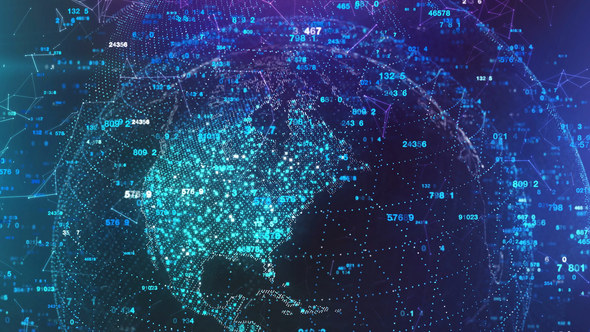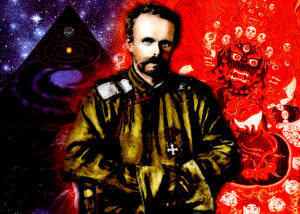LUMINAL ECONOMY

‘In the near future electrons and light flow throughout the Universe’
If modernity (as theorised) is the territory of which the feedback loop is the map, then hypermodernity is the map that has become the territory. The Hyper Real deterritorialises what the Hyper Modern reterritorialises. It is the replacement of the territory with the map.
Any process that reinforces or feeds on itself can be described as a positive feedback loop: ‘Positive feedback loops enhance or amplify changes; this tends to move a system away from its equilibrium state and make it more unstable.’
The circuitry of modernity, then, is sent into overdrive, flips over, and the exponentially increasing excitability of circuits in the deep techonomic substrate accelerates human culture to its limit. Under the regime of the hypermodern the waveform of cybernetic feedback loops moves into a higher frequency, and as Capital accelerates to the speed of light, relative time dilates.
The accumulated mass of techonomic development draws everything into this gravity-well, accelerating Capital to the speed of light. Acceleration is a gravitational time dilationary affect; a superstrate reflection of the increased mass of the techonomic sphere as Capital moves through successive waves of depletions of the forces of production in the substrate.
‘Gravitational waves are disturbances in the curvature of space-time, generated by accelerated masses, that propagate as waves outward from their source at the speed of light.’
The mode of production morphs in ways that seek to disintegrate Marxist historiography by melting productive forces and relations into each other, rendering the orthodox dialectic obsolete. The hand-mill gives you society with the feudal lord; the steam-mill society with the industrial capitalist as much as the networked personal computer gives you the surveillance capitalist. The inversion here is no less profound for its subtly: whereas the former capitalises human labour, the latter seeks to capitalise all of human behaviour, experience and activity and subsume it to its ends.
‘Capital is not an essence but a tendency, the formula of which is decoding, or market driven immanentization, progressively subordinating social reproduction to techno-commercial replication.’
The direction of this tendency is towards abstraction, and what Capital abstracts it tends to disintegrate – not into nothingness but into something more malleable, more ephemeral. Something immaterial.
Acceleration of abstraction is the teleology of Capital.
‘But counter to what Marx assumed, communist revolution cannot resolve the contradiction between forces of production and relations of production. The contradiction admits no dialectical Aufhebung. Capitalism can always escape into the future precisely because it harbours permanent and inherent contradiction. Accordingly, industrial capitalism has now mutated into neoliberalism and financial capitalism, which are implementing a post-industrial, immaterial mode of production…In fact no proletariat exists under the neoliberal regime at all. There is no working class being exploited by those who own the means of production. When production is immaterial everyone already owns the means of production himself.’
Hypermodernity, then, is symptomatic of the emergence of a Luminal Economy.
The hologram, a projection of light, is emblematic of the future in science fiction as it represents the coming of a Luminal Economy. It’s 2049, Los Angeles, we’re in K’s apartment and the Machine (a hologram) is colonising a body before our eyes, reprogramming our desires. Marlette, a Replicant, is the simulacra; a copy that depicts that which no longer has an original. Joi is pure simulation, the imitation of the Real.
The symbol of modernity is the Machine:
‘Were we required to characterise this age of ours by any single epithet, we should be tempted to call it, not an Heroical, Devotional, Philosophical, or Moral Age, but, above all others, the Mechanical Age. It is the Age of Machinery, in every outward and inward sense of that word; the age which, with its whole undivided might, forwards, teaches and practises the great art of adapting means to ends. Nothing is now done directly, or by hand; all is by rule and calculated contrivance.’
It’s 2028, Tehran. Technocapital surveils all before it, a holographically projected simulated battlefield on which it strategises before putting its pieces into play. The biological isn’t safe without fusing with the cybernetic. Techonomic hardware fuses with biogenetic wetware. Technocapital conquers fresh territory, its avatar, The Machine, stalks the streets looking for fresh bodies. Immediately it gets it’s tendrils into the localised Culture Industry: ‘May peace be upon you’.
.السلام علیكم
Deterritorialisation/Reterritorialisation in real time. Time becomes compressed. Whereas it is the digital that characterises the hypermodern. The digital, which is a natural outgrowth of the machinic, developed on a divergent path that is now looping back to reintegration. The current development in the abstraction of Capital is to capitalise digital data. Google, Facebook, Amazon. Big Data seeks to turn the whole of society into a single office and a single factory by monopolising ‘behavioural surplus’. In this way Capital is able to disengage itself from the material world and take advantage of the ‘economies of scale’ the come from existing in the digital and as digitisation of the Means of Production proceeds apace, a new, abstract, immaterial Mode of Production emerges – which is a mode of production based in light.
With a digital substrate in place, the Machine seeks to decouple itself from the material, freeing itself from the surface of the Earth. Yet how was this substrate initialised?
Petrodollar recycling is the experience of modernity in microcosm, a circuit. Petro-dollar recycling, fractional reserve banking and fiat currency form a cybernetic dialectical triad, a bundled circuit, within and between themselves, that allow for the absolute abstraction of the Capital process and a subsequent decoupling of the productive process from reality into an immaterial mode of production.
Much like the feedback loop of petrodollar recycling, ‘behavioural surplus’ is modernity in microcosm. It is via this dialectic that Capital seeks to disengage itself from the Real and launch itself from the surface of the Earth. If the ‘petrodollar-fiat currency-fractional reserve banking’ feedback loop is the dialectic that cleared the territory for Luminal Economy, the ‘second modernity-neoliberalism-surveillance exceptionalism’ feedback loop is the dialectic that colonises the created space.
As the Mode of Production switches over to abstract data production, the entire global economy is sent into orbit around abstract techno-financial forces and thus becomes deworlded – a global grid of abstract networks and digital technologies. As Capital accelerates to the speed of light, it extends huge latitudinal lines that cover the face of the Earth.
Global techonomics are dependent on networks. Our current global information network, which is primarily interconnected through beams of light coursing through fibreglass cables, was built on the backs of military communication and global financial networks. More precisely the development of global financial Capital (a network) was a necessary prerequisite for the genesis of the immaterial Mode of Production. Bitcoin has its roots in Iran.
‘The monopoly of capital becomes a fetter upon the mode of production, which has sprung up and flourished along with, and under it. Centralisation of the means of production and socialisation of labour at last reach a point where they become incompatible with their capitalist integument. This integument is burst asunder. The knell of capitalist private property sounds. The expropriators are expropriated.’
The digital not only loops back to infiltrate the Real, but also exfiltrates the Real into the digital.
Software hacking hardware hacking wetware hacking hardware hacking software. It’s now possible for genes to traverse the boundary between the digital and the Real and vice versa.
The hypermodern, immaterial mode of production can fairly be characterised as information surveillance capital, and its own products loop back from the immaterial into the Real. The surveillance capital – intelligence agency feedback loop that came into being at the inception of Hypermodernity essentially hijacked any resultant dialectic.

UNCONSCIOUS ABYSS website











